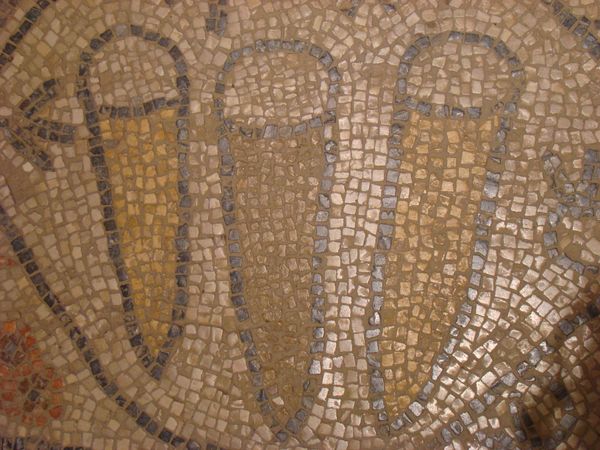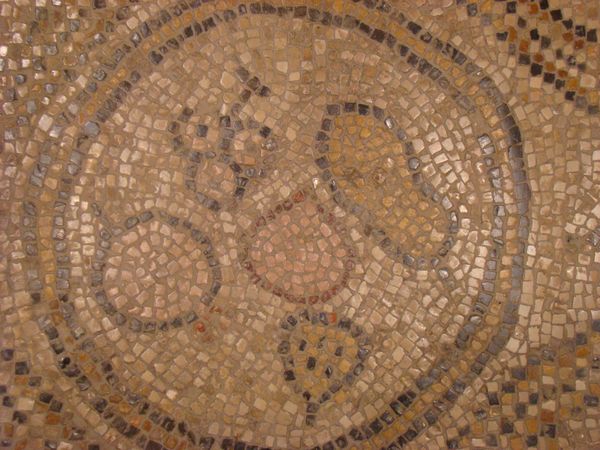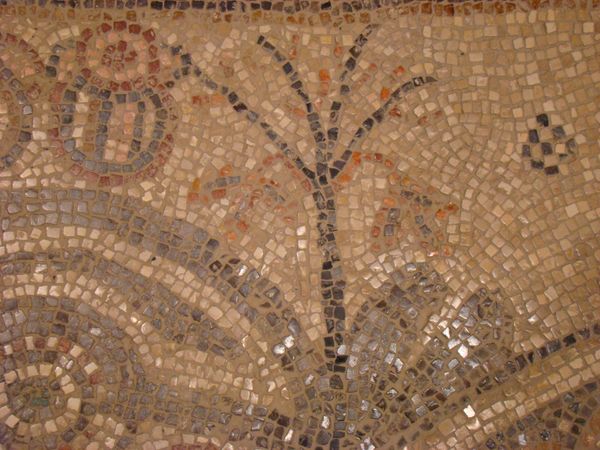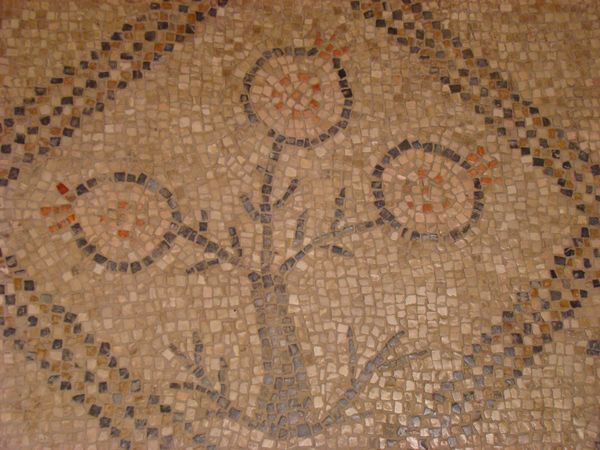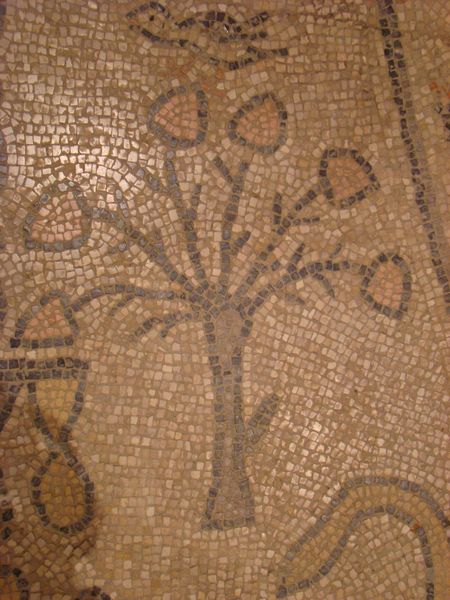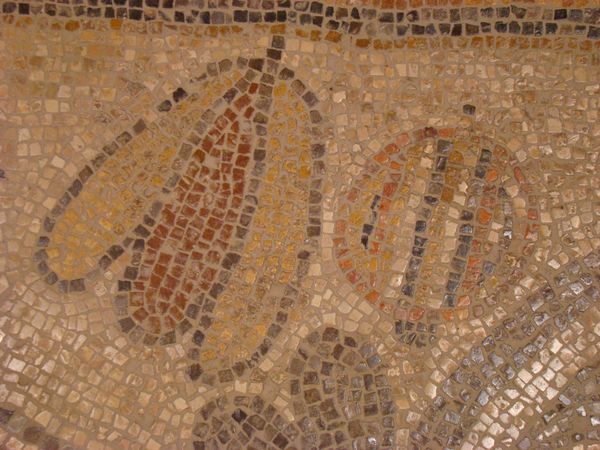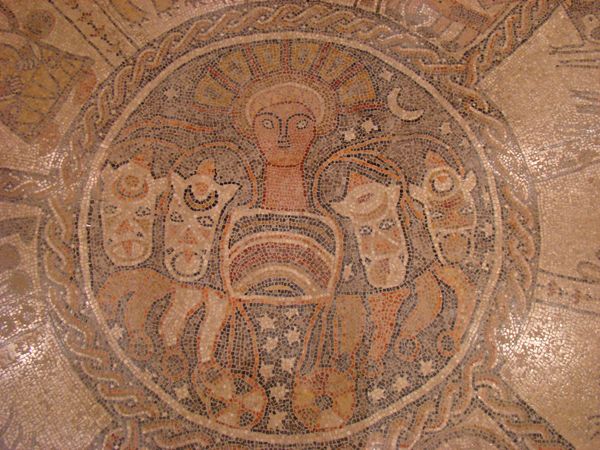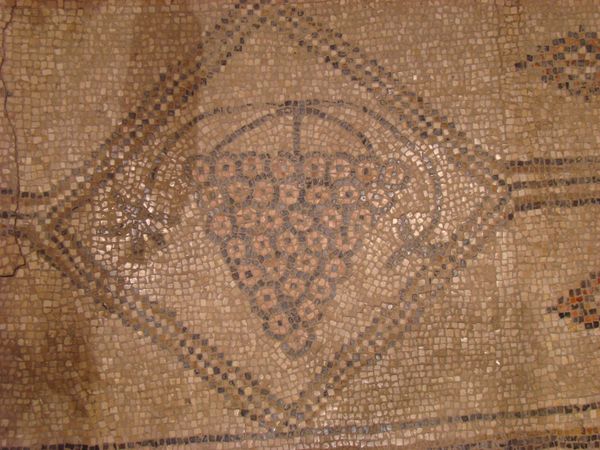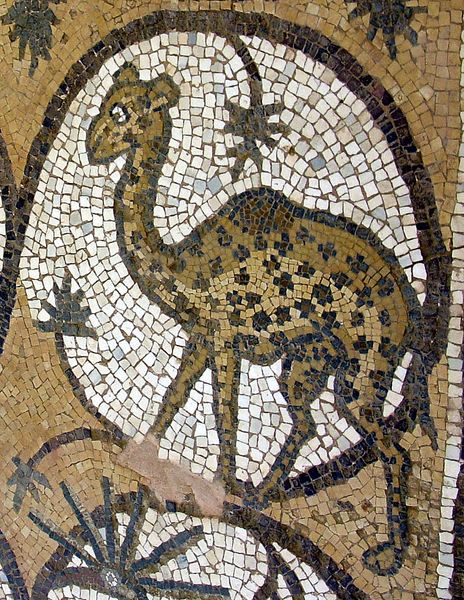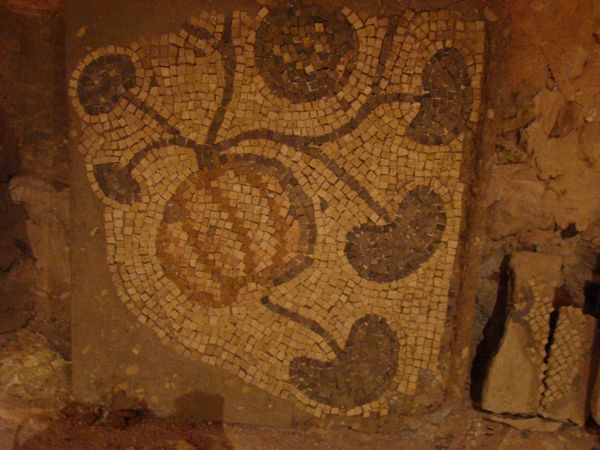
mosaic
#
mosaic
#
byzantine-art
#
geometric
Copyright: Public domain
Curator: The mosaic before us is part of the floor from the Beth Alpha Synagogue in Beit She'an, Israel, dating to 527 CE. It depicts several scenes, and this particular section showcases geometric motifs. Editor: Immediately, I notice the overall warm and earthen palette. It projects a grounded, almost comforting feeling, despite being composed of these rigid tesserae. Curator: Absolutely. Considering this mosaic was laid during the Byzantine period, we should think about its construction in the context of skilled artisans carefully setting each stone, with access to certain materials and colors in their region, as a collective production. It wasn't just some lone artistic genius at work, but an entire process deeply rooted in available resources. Editor: Right, it's so important to situate such a piece within the visual and religious environment that informed its creation. The repetitive patterns, as humble as they may appear now, served to visually unite the space for worshipers and perhaps offer cues about cosmology or the sacred. Considering its location in a synagogue, it spoke to a specifically Jewish community at a time of immense political and religious negotiation. Curator: You can almost feel the weight of that social context in the tile work itself! Think of each tessera, carefully selected and placed. Someone quarried it, shaped it, delivered it, and arranged it, all with purpose. How incredible that those hands are present within the artwork itself! Editor: And that placement matters greatly. The visual symmetry mirrors, in some ways, the community’s collective hopes for balance and faith within a larger, potentially unstable world. Curator: So true, especially thinking about the limitations they faced in pigment creation and application—those restricted materials pushed a level of artistic ingenuity that's so often overlooked in our analyses today! Editor: Well said! Reflecting on these humble tesserae invites questions about what this place, the Jewish community and its spiritual practices in Byzantine empire, meant to the congregants using it as a place for social gathering, performance and negotiations. Curator: Yes. Materially and symbolically it stands at the confluence of so much history! Editor: Absolutely, a history we can continue to reflect on together.
Comments
No comments
Be the first to comment and join the conversation on the ultimate creative platform.
